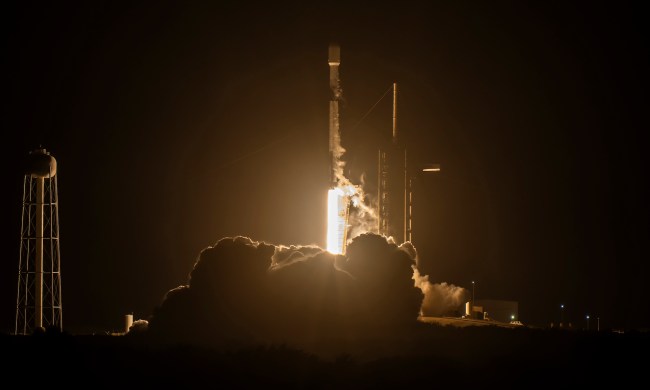Two Chinese astronauts have completed the longest-ever spacewalk, spending nine hours working on the exterior of the Tiangong space station. Astronauts Cai Xuzhe and Song Lingdong performed the mammoth walk yesterday, December 17, as reported by China’s Manned Space Engineering Office (CMSEO).
With a total duration of nine hours and six minutes, this spacewalk is longer than the previous record for a single spacewalk, which was set by NASA astronauts James Voss and Susan Helms in 2001, and which lasted for eight hours and 56 minutes.

“At 21:57 on December 17, 2024, Beijing time, after 9 hours of extravehicular activities, the Shenzhou 19 crew astronauts Cai Xuzhe, Song Lingdong, and Wang Haoze worked closely together, with the support of the space station’s robotic arm and ground scientific researchers, to complete the mission,” the CMSEO announced in a statement, translated from Chinese.
The spacewalkers “performed tasks such as installation of space debris protection devices on the space station, inspection and disposal of extravehicular equipment and facilities,” the CMSEO said, adding that: “The extravehicular astronauts Cai Xuzhe and Song Lingdong have safely returned to the Wentian experimental module.”
The CMSEO also shared further photos of the spacewalk underway:


The astronauts are part of the Shenzhou 19 mission, which launched in October 2024 and is the eighth flight performed so far to China’s space station. They will stay in space for around six months before heading home in 2025.
During that time, they will work on the Tiangong space station, which is designed to be modular, with modules to be added over time as the station expands its capabilities. In addition to the core module Tianhe, which was launched in 2021, there are also two laboratory modules called Wentian and Mengtian, both launched in 2022.
China notably does not participate in the International Space Station (ISS), which is a collaboration between the U.S., Russia, Europe, Japan, and other countries. The ISS is scheduled to be destroyed in 2030 and NASA hopes to replace it with commercial space stations, however, there may be a time during which China’s space station becomes the primary location for research in low-Earth orbit.
NASA recently shared its strategy for maintaining human presence in space after the deorbiting of the ISS, stating that it aims to have a “diversity of providers operating on a regular cadence” to ensure access to low-Earth orbit.




